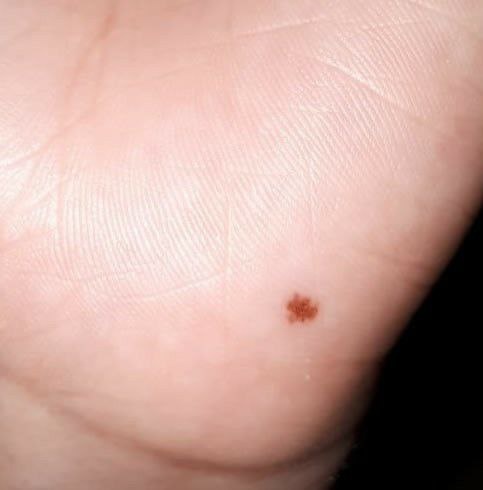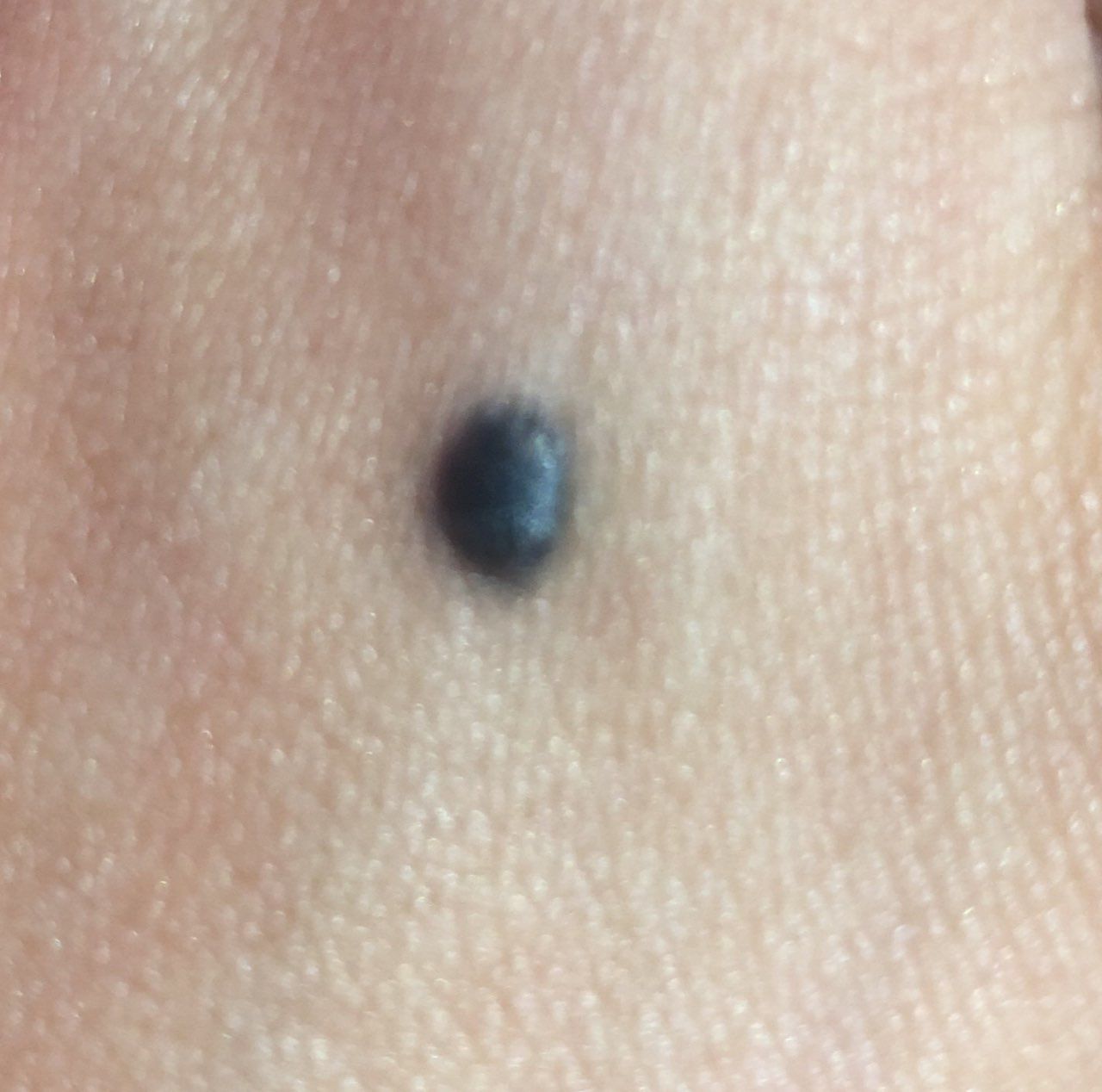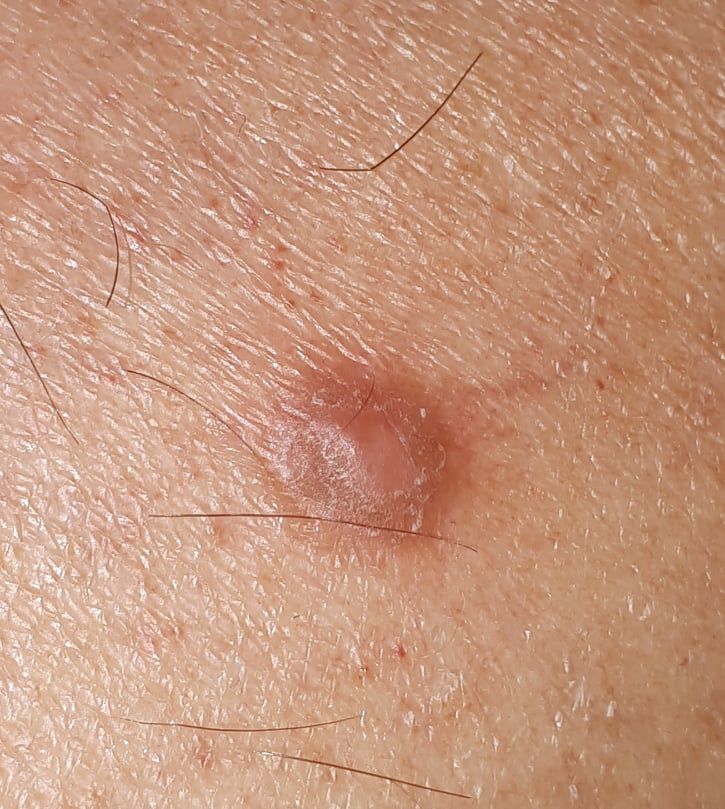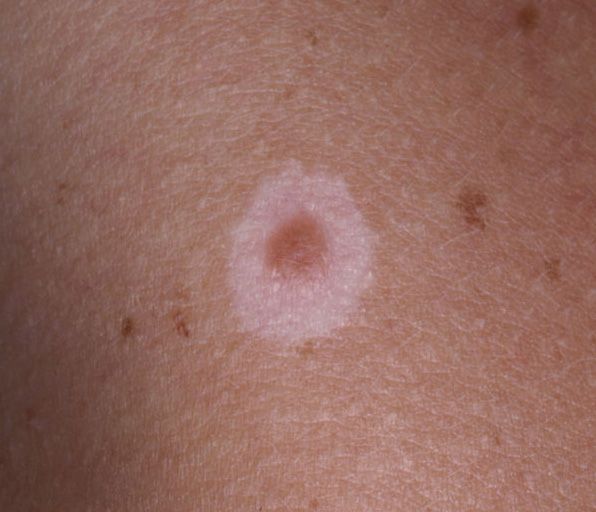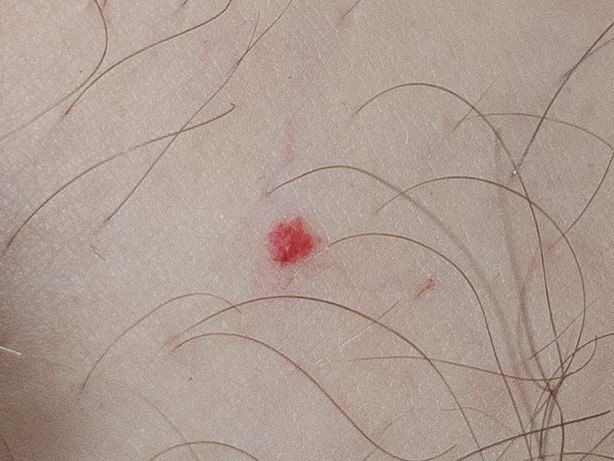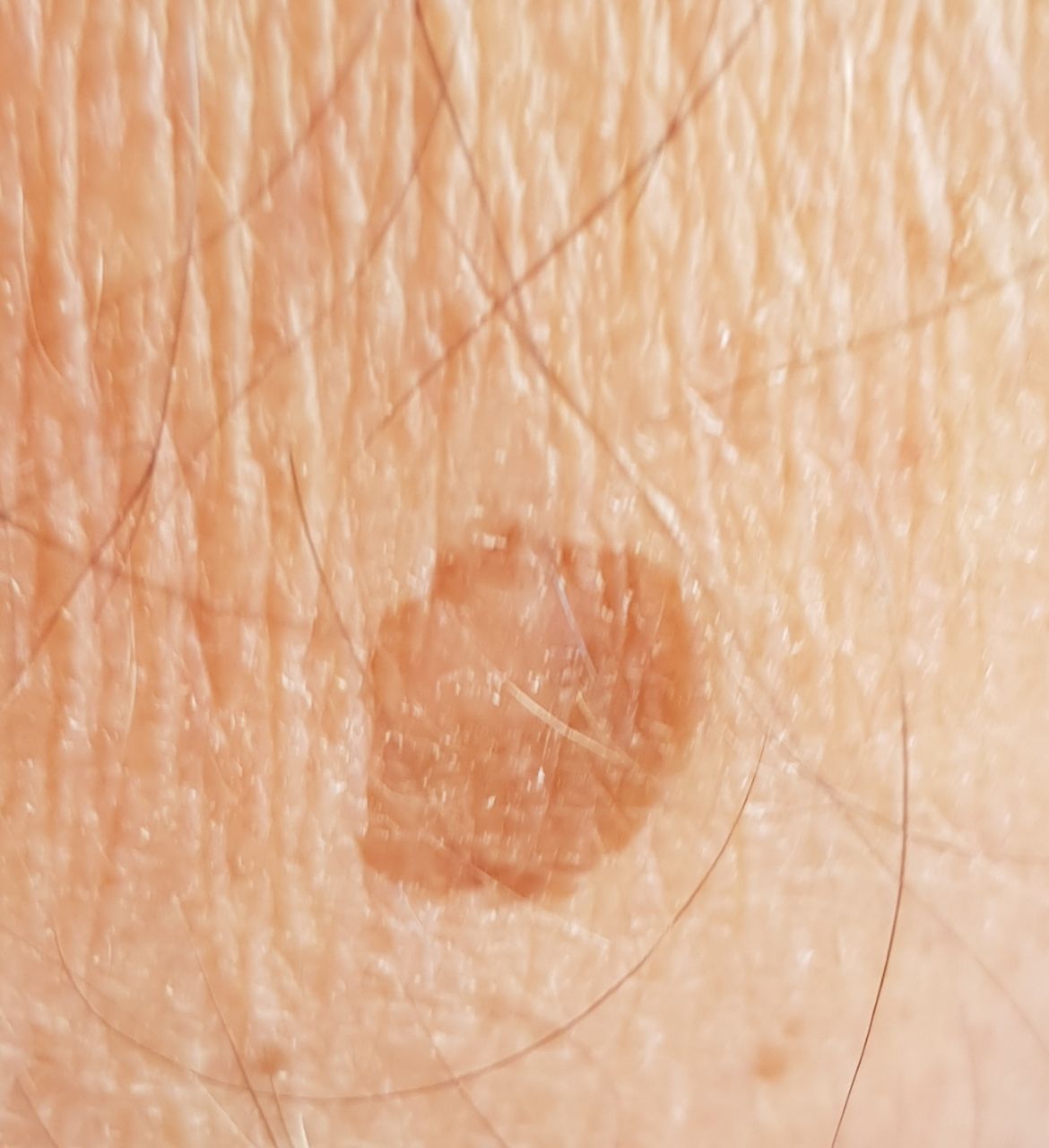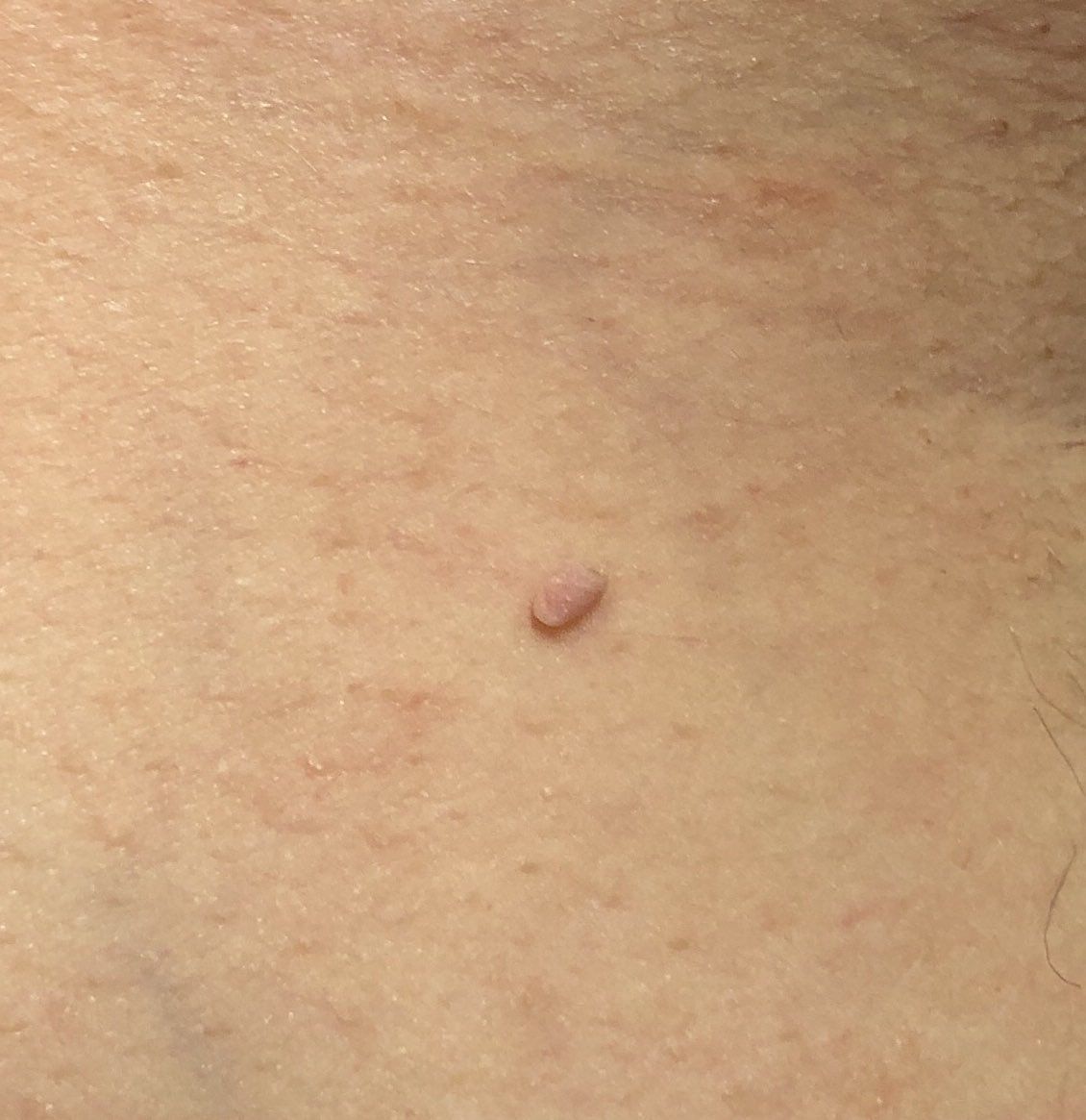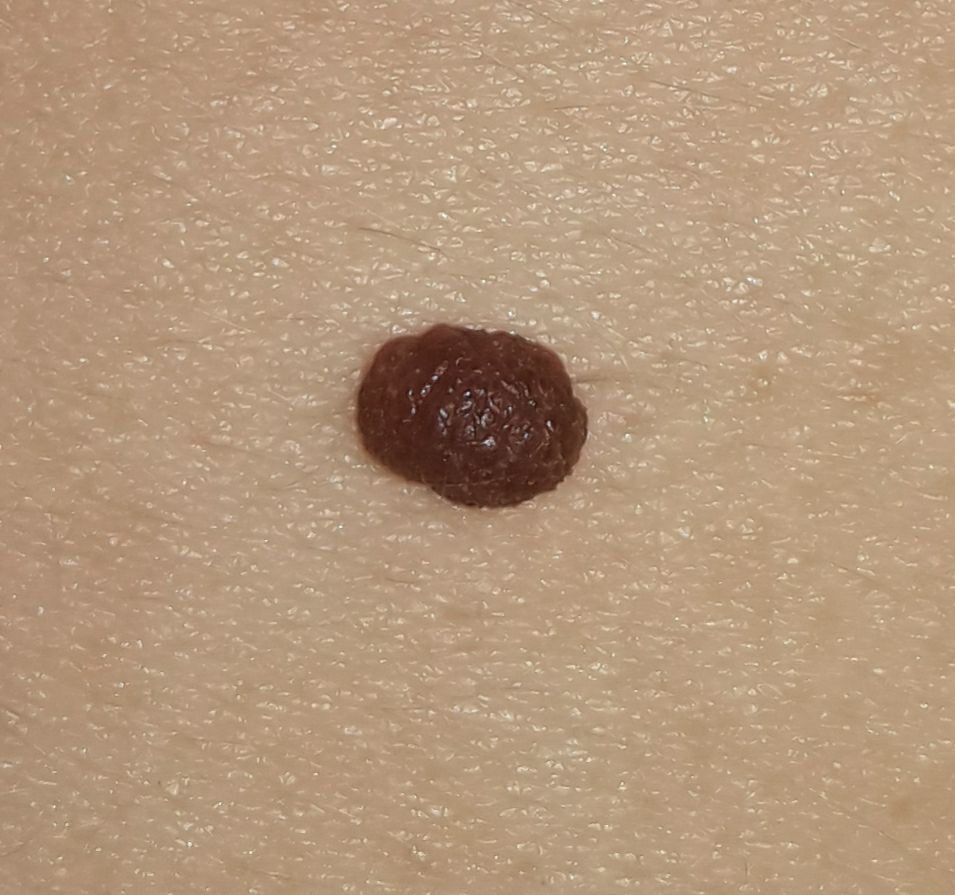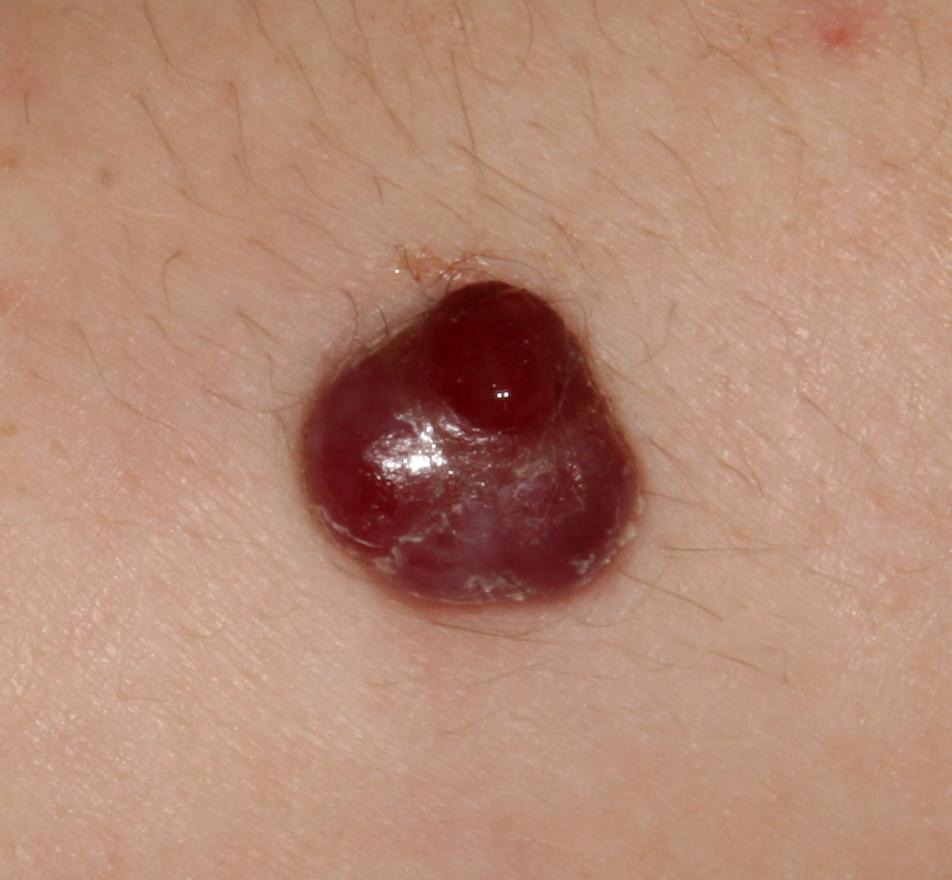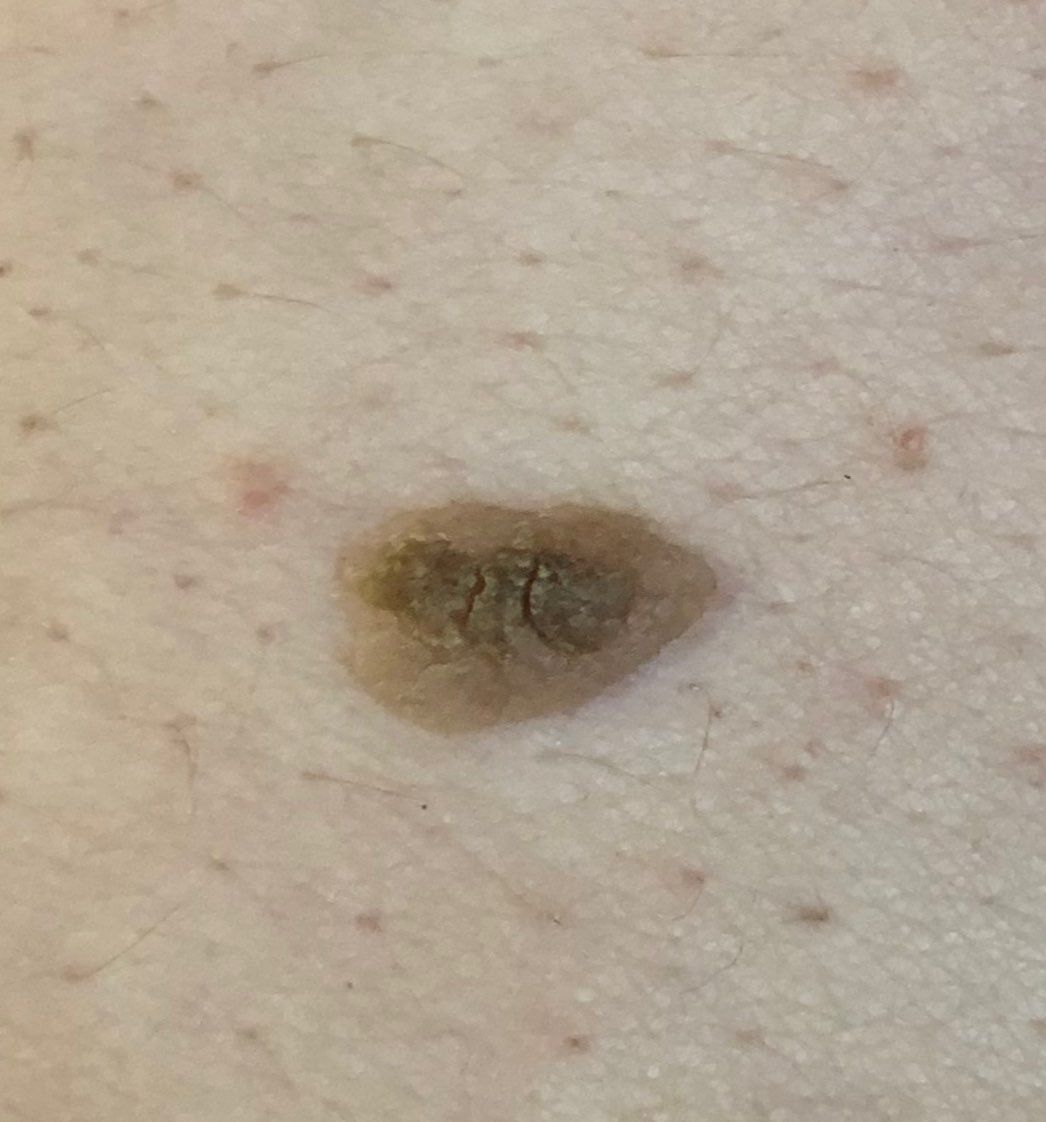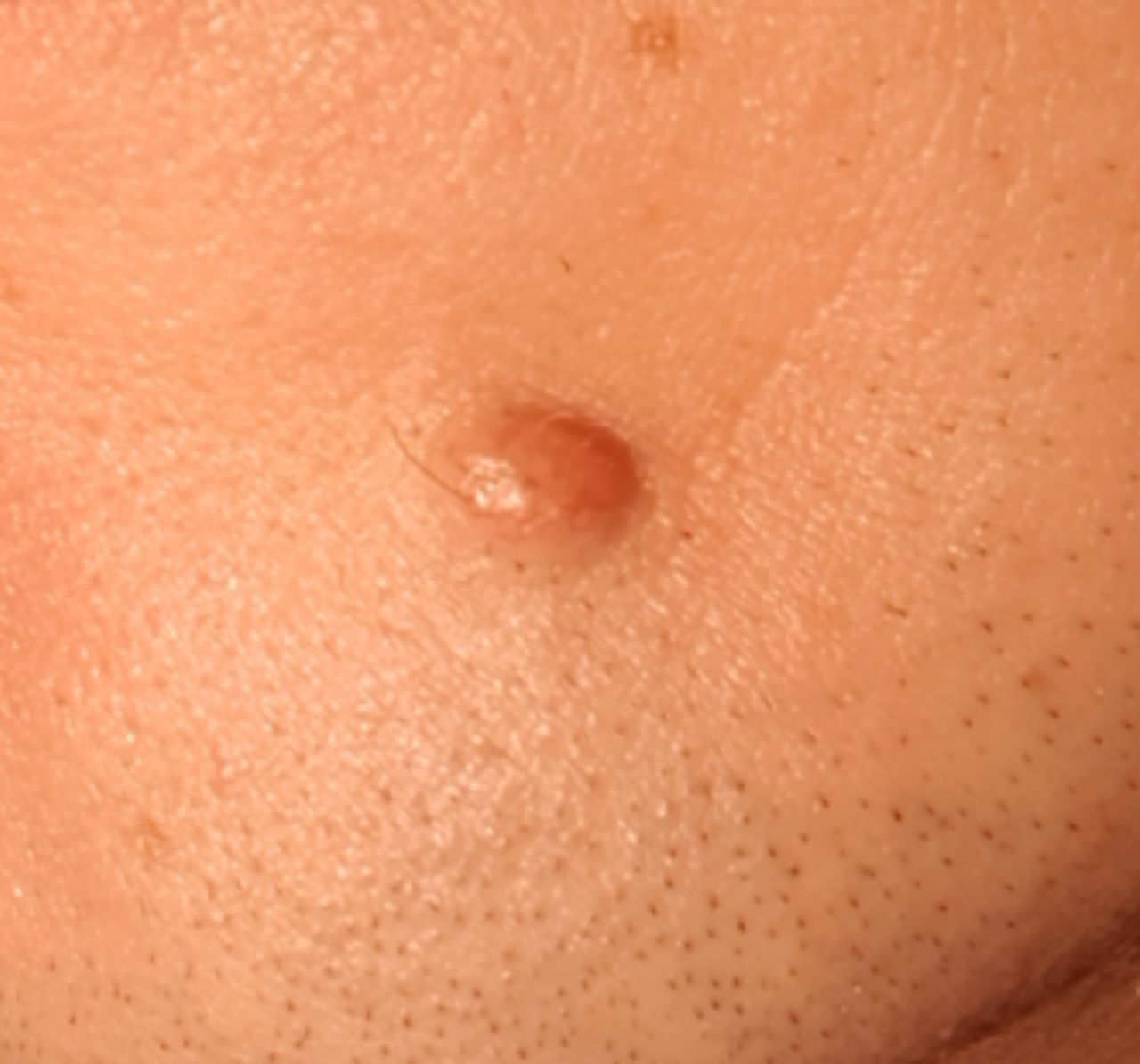Benign neoplasms, also known as “moles,” are noncancerous growths on the skin that usually appear as small dark spots or raised bumps. They are usually harmless and form from clusters of pigment cells.
💚 Low risk: Benign neoplasms are not dangerous and do not require medical intervention. Self-monitoring 1-2 times per month is recommended. Treatment or removal only for cosmetic reasons or if the condition worsens. However, if such neoplasms change in size, shape, color, or other characteristics, they should be examined by a health care provider to rule out any dangerous changes.
⚠️ Medium risk: Some benign neoplasms can mimic the appearance of other, more dangerous conditions. It is very important to make a correct diagnosis in time. If it is a first detected pathology, it is recommended to see a dermatologist at a routine checkup or in the next 1-3 months. Then – self-monitoring 1-2 times a month and reapply to the doctor in case of deterioration.
💊 Treatment: Treatment or diagnosis of benign neoplasms usually does not require urgent intervention unless there are significant changes or symptoms. If you notice any changes in such neoplasms, it is recommended that you make an appointment with a dermatologist for evaluation. Dermatologists specialize in the diagnosis and treatment of skin conditions, including benign neoplasms.
💡 Skin Self-Exams tips: Follow the ABCDE rule for skin self-examination. Perform a skin self-examination regularly, ideally once a month, to keep an eye out for new or changing growths. Also, be alert to any unusual or bothersome skin changes and report them to your dermatologist immediately.
